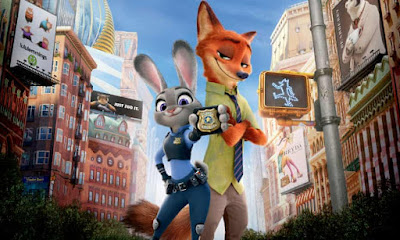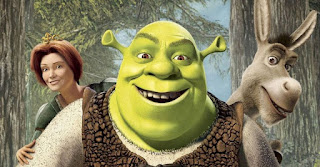How inaccurate subtitles meant Zootopia was less racist in Indonesia
Are kids films really that deep?
In my last blog, we were looking at how mistranslations in subtitles come about, and how they impact the communicative functions of dialogue in film and TV. Here, I thought we could focus on a case study and look at what it tells us about the role intercultural pragmatic awareness plays in how viewers understand broader themes and motifs in international media.
Being a man of culture, the likes of the previously mentioned Inglorious Basterds and Squid Game are unappealing to me, which is why I haven't watched them. Instead, I make sure I expose myself only to the highest quality expressions of artistic prowess, which is why we're zeroing in on a picture I have actually seen and can appreciate as the distillation of spell-binding filmmaking: Disney's Zootopia (or Zootropolis in some parts of the world).
You've read the title. Admittedly, the suggestion that an animated buddy cop movie about an anthropomorphic fox and rabbit intended for children has anything to do with racism might initially be shocking. But, the idea of using media, even media designed for kids, as a vehicle to express social commentary isn't a novel one, and truthfully you'd be hard-pressed to find any art that is completely devoid of political undertones in some form. To be clear, we'll be exploring Nisya Putri Shaliha's 2018 analysis of the movie's references to racism and race relations in Zootopia (2016).
Intercultural pragmatics and Zootopia's allegories of racial injustice
As well as analysing the subtitles at an utterance level, we're also going to be looking at the translations more broadly as discourse. As Troy McConachy (2018) articulated, we need to consider the roles of pragmatics in intercultural communication too, and not just call it a day with the linguistic perspective.
Zootopia social commentary pivots around the idea that an animals' species alone wrongfully condemns them to occupy a certain corner of society within the city, mostly confined to a certain jobs, regions, social circles etc. Crucially, the creative team behind the movie are illustrating their perspective on the discrimination and oppression black people face in present-day America. Whilst the idea of systemic racism is by no means purely unique to the US, the role language and pragmatic awareness plays in making sure this allegory is effectively conveyed for international viewers is pretty tricky.
Zootopia's a little different in Indonesia
Zootopia's reference to racism are not explicit, and there is some expectation for the audience to decipher the deeper meanings (Xue, 2016). As Shahila (2018) illustrates through numerous dialogue experts, this is primarily achieved by portraying routines, interactions and activities that are familiar to those who are well immersed in American culture. This is not the case for Indonesian viewers, however.
Shahila (2018) compares different examples of the original dialogue alongside the Indonesian translation and the back translation into English. For example:
"You probably didn’t
know, but a bunny can call
another bunny ‘cute’, but
when other animals do it…
it’s a little...”
is translated to
“Mungin kau tak tahu,
kelinci boleh memanggil
kelinci lain ‘imut’, tapi
ketika hewan lain
melakukannya… itu
sedikit…”
in Indonesian, which in English means
“Maybe you don’t know, a
bunny can call another
bunny ‘cute’, but when
other animals do it… it’s a
little…”
The small changes to the dialogue are pretty negligible, but our metapragmatic awareness means that we can really appreciate this conversation by how it maps onto the real-life counterpart. The screenwriter is alluding to how the African American community have reclaimed the use of the n-word as a slur, and instead use it as a term to show friendship or comradery in exclusively black social groups (Sturaro & Fasoli, 2021).
Crucially, this is a feature of speech that is mostly exclusive to the cultural scripts of black people in America. African Americans have an experience unique from people of colour across the globe. The n-word was originally formulated as a slur during the era of the Transatlantic slave trade, and thus it's reclamation by the black community is not a concept that exists in Indonesian culture. Although the speech-act itself has been relatively well accommodated (Spencer-Oatey, 2008) for the Indonesian viewer, the writers will unintentionally be constructing a different relationship with Indonesian audience than the American one, owing to an ineffective communication of cultural and contextual factors.
Shahila (2018) also comments on the translation of stereotype in the following utterance, from
"I am so sorry! Me,
Benjamin Clawhauser, the
guy everyone thinks is just
a flabby donut-loving cop,
stereotyping you. Oh..."
to
“Maaf! Aku, Benjamin
Clawhauser, polisi gendut
penggemar donat telah
meremehkanmu.”
meaning
“Sorry! Me, Benjamin
Clawhauser, a flabby
donut-loving cop, has
underestimated you.”
This subtle difference is because there is no equivalent for "stereotype" in Indonesian. The approximated "meremehkanmu" is instead the act of underestimating or belittling someone, but this is fundamentally a different concept in the context of the film. The use of stereotype is deliberately employed to invoke the domestic viewers to question how the stereotypical black person is often negatively evaluated in their culture. This is not coming through in the Indonesian translation though; the act of underestimating instead suggests to the audience that this is a negative evaluation of the character based on their personal behaviour, excluding the original commentary on systemic and systematic racism and negative cultural expectations influence many people's perception of black people in modern America.
The differences in the translation are subtle, and in isolation, not that big of a deal. And yet, the subtitles have failed to use points of reference that would be appreciated by viewers with Indonesian cultural identities. Ultimately, it's quite likely that an Indonesian person would have a completely different point of view on the movie. The subtitler's apparent minimal consideration of intercultural linguistic and pragmatic frameworks means that for viewers in Indonesia, Zootopia is a signficantly less nuanced and complex commentary on the mechanics of race in society than it is for their American counterparts.
Interested in learning more?
I find this topic fascinating, and I really hope that comes across in this post! As usual, I've added the in-text citations for any sources I've used throughout this blog entry. If you want to read a bit more into any of the articles I've referred to, the authors' names and publish date are all hyperlinked to the resources online.
Thanks!
- Kunaal😉




Comments
Post a Comment